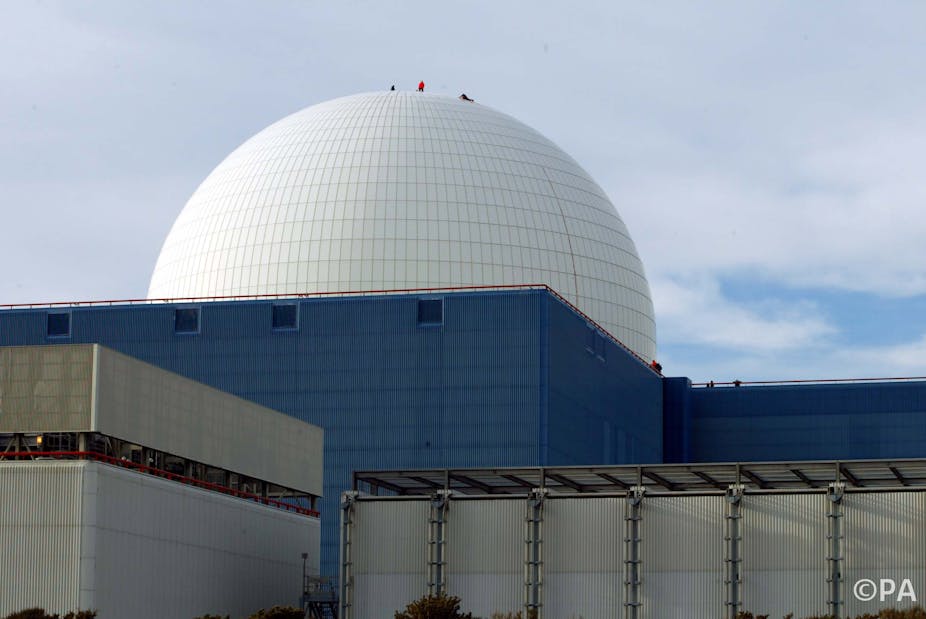Take a hard look at the painful process of de-carbonising the UK’s electricity supply, and it’s clear that the options on the table are not great.
From the outset, changes to the system generate further problems to be solved. Decommissioning the most polluting coal plants is the place to start, but given that they contribute 30-40% of the country’s electricity supply, this leaves an energy gap that requires filling.
Could wind replace coal? The government has an ambitious programme for expanding domestic offshore wind, with the recently commissioned London Array off the East Anglian coast currently producing a world-leading 650MW. But as UK electricity demand ranges from 38-58GW, the energy generated by the London Array and other wind farms is a mere drop in the ocean of what will be required.
Could fracking be the answer? A successful domestic shale gas initiative could provide the UK with a greater security of gas supply, possibly cheaper electricity, and a much-needed backup capacity for the rapidly growing wind power sector. Even so, shale gas isn’t low carbon energy and, critically, it’s a finite resource.
What about nuclear energy? It’s low carbon and has the potential to produce relatively low cost, reliable electricity. Although nuclear power often sparks debates over safety, a comparison of the number of deaths caused by energy source shows that watt-for-watt, nuclear power causes far fewer fatalities than coal, oil or gas.
With support from the British government (and British taxpayers) a consortium led by EDF, the French firm that runs the UK’s current nuclear reactor fleet, is to build a new nuclear power station at Hinkley Point C in Somerset. This will provide 3.2GW of baseload power, equivalent to around 5-7% of the country’s electricity demand and enough to power 5m homes. Other companies including Horizon and NuGen also propose to build further nuclear power stations in the UK.
Problem solved then? Probably not. Meeting the UK 2050 climate change targets would require in excess of 16GW of nuclear power. No other nuclear plants are guaranteed, and even the most optimistic projections suggest Hinkley Point C will not start generating power until 2023. With costs estimated at an eye-watering £14-16 billion, it comes as no surprise that the barrier to more nuclear power stations is the very large, high-risk capital investment required with large nuclear reactors.
Small is beautiful
But there may be another option: the small modular reactor (SMR), generating power from 300MW down to a very small 10MW.
Their definition as “modular” stems from the potential for parts to be precision-engineered on a production line with minimal assembly on site. In principle, factory production drives costs down and reactor reliability up. Currently, the technology’s immaturity prevents a detailed economic evaluation of its potential to deliver cost effective power. However, given external factors such as the future price of gas, carbon taxes and the success of carbon capture and storage, SMRs could still be extremely competitive.
The UK parliamentary Energy and Climate Change select committee is examining the potential of SMR, and the outcome of this and other studies could significantly influence the direction of UK energy policy.

The main advantage of SMRs is the greatly reduced construction cost. The income from building and selling the first SMR could fund the second, and then a third, and so on until the combined output of the reactors reaches that of a single, large reactor in same the gigawatt range as Hinkley Point C. This would reduce the financial risk associated with large nuclear power stations considerably. It would also reduce the barriers to market entry to a level where smaller firms and utilities could enter, increasing competition and in theory reducing costs further.
There are other advantages: SMRs can better exploit passive safety features – those that are immediate in the event of a failure, and require no human intervention. For example, as the reactor core is smaller it produces less heat, and this removes the complete reliance of larger reactors on a dependable coolant to prevent a meltdown. In fact, many designs can dissipate heat through the reactor pressure vessel itself, using natural convection to maintain circulation. The reduced reliance on coolant – typically water – means SMRs could be set up away from coastal sites and moved close to major industrial complexes or cities. They can be made to load follow – adjusting output to match fluctuating demand – and the waste heat they generate can be harnessed to provide heat for homes or buildings, or for use in industrial processes.
Downsized nuclear reactors are by no means a new concept. The UK’s first generation Magnox reactors were small – all under 300MW. And small, self-contained “navalised” reactors are used to power ships – icebreakers, floating reactors used in Russia to bring heat and power to remote locations far from the grid, aircraft carriers, and submarines.
Indeed, the UK submarine fleet is powered by small pressurised water reactors, maintained by Rolls-Royce. With home-grown construction and maintenance expertise, the UK should be taking advantage of these skills to develop and deploy its own SMR design.
The US already recognises the potential of SMRs and has poured hundreds of millions of dollars into helping its nuclear industry design a suite of SMR reactors at a test location at Savannah River nuclear laboratories. If successful, US firms will gain a strong commercial lead in a potentially global supply chain. The question is whether the UK will match America’s ambition.

